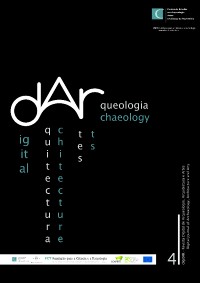Please use this identifier to cite or link to this item:
https://hdl.handle.net/10316.2/43057| Title: | La arqueometría en la conservación preventiva de objetos metálicos del Museo Naval de Madrid | Other Titles: | Archeometry in preventive conservation of metal objects from the Naval Museum of Madrid | Authors: | Agua, F. Gálvez Farfán, J. M. Peña, J. Conde, J. F. González Rodrigo, M. García Ramírez, S. García Heras, M. Villegas, M. A. |
Keywords: | conservación;plomo;acidez ambiental;sensor;protección;Conservation;lead;environmental acidity;sensor;protection | Issue Date: | 2017 | Publisher: | Imprensa da Universidade de Coimbra | Abstract: | The evaluation of the environmental conditions, both in the room and in the showcases, carried out in the Naval Museum of Madrid from a protocol of monitoring the environmental acidity using optical sensors based on the sol-gel technology, served to confirm that the conditions were adequate in most exhibition spaces. However, in some showcases where conservation problems of metallic objects from wrecks had been observed, the environmental pH values detected were acid (mean values lower than pH = 6.5). This contribution presents the results of the investigation carried out to determine the causes of the conservation problems observed in a showcase that exposes lead bullets, in order to establish preventive conservation guidelines. The lead bullets develop a poorly consistent whitish coating after their cleaning and subsequent corrosion protection with a commercial acrylic resin. Different tests were carried out in the laboratory with the treated and untreated objects inside closed containers, and with the polymethylmethacrylate supports and containers from inside the showcases, using in both cases the mentioned optical sensors. The results indicated that a layer of lead formate was formed in the lead objects produced by the presence of acidic species, the origin of
which is most probably due to the combined
effect of the use of the acrylic resin and the
presence of polymethylmethacrylate materials
in a closed environment. The determination
of the pH in the environment of the showcase
and its follow-up in the laboratory tests allowed
to alert to the acid medium generated, which
has served to establish corrective actions of
preventive conservation in the museum. La evaluación de las condiciones ambientales, tanto en sala como en vitrinas, realizada en el Museo Naval de Madrid a partir de un protocolo de seguimiento de la acidez ambiental que utiliza sensores ópticos basados en la tecnología sol-gel, sirvió para constatar que las condiciones de conservación eran adecuadas en la mayoría de los espacios expositivos. Sin embargo, en algunas vitrinas en las que se habían observado problemas de conservación de objetos metálicos procedentes de pecios, los valores de pH ambiental detectados fueron ácidos (valores promedio inferiores a pH = 6,5). Esta contribución presenta los resultados de la investigación llevada a cabo para determinar las causas de los problemas de conservación observados en una vitrina que expone balas de plomo, con el propósito de establecer pautas de conservación preventiva. Las balas de plomo desarrollaban una capa blanquecina poco consistente tras su limpieza y posterior protección contra la corrosión con una resina acrílica comercial. Se realizaron diferentes ensayos en el laboratorio con los objetos tratados y sin tratar dentro de recipientes cerrados, y con los soportes y contenedores de polimetilmetacrilato del interior de las vitrinas, utilizando en ambos casos los sensores ópticos mencionados. Los resultados indicaron que en los objetos de plomo se formaba una capa de formiato de plomo producida por la presencia de especies ácidas cuyo origen se debe, muy probablemente, al efecto combinado del empleo de la resina acrílica y la presencia de materiales de polimetilmetacrilato en un ambiente cerrado. La determinación del pH en el ambiente de dicha vitrina y su seguimento en los ensayos de laboratorio ha permitido alertar sobre el medio ácido generado, lo cual ha servido para establecer acciones correctoras de conservación preventiva en el museo. |
URI: | https://hdl.handle.net/10316.2/43057 | ISSN: | 2182-844X (PDF) | DOI: | 10.14195/2182-844X_4_10 | Rights: | open access |
| Appears in Collections: | digitAR: Revista Digital de Arqueologia, Arquitectura e Artes |
Files in This Item:
| File | Description | Size | Format | |
|---|---|---|---|---|
| la_arqueometria_en_la_conservacion_preventiva_.pdf | 1.69 MB | Adobe PDF |  |
Items in DSpace are protected by copyright, with all rights reserved, unless otherwise indicated.
